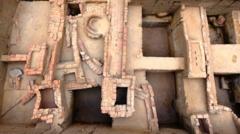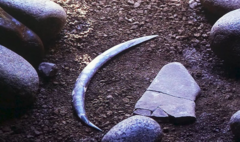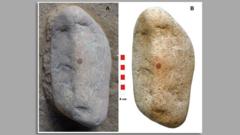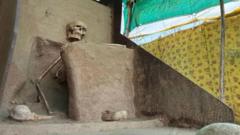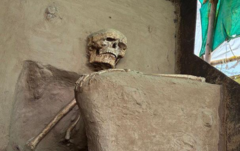Rakhaldas Banerjee, credited with the groundbreaking discovery of Mohenjo-daro, remains an overlooked figure in history despite his significant contributions to archaeology.
**Unearthing Rakhaldas Banerjee: The Overlooked Pioneer of Indian Archaeology**

**Unearthing Rakhaldas Banerjee: The Overlooked Pioneer of Indian Archaeology**
Discover the life and legacy of Rakhaldas Banerjee, an Indian archaeologist whose discoveries shaped our understanding of an ancient civilization.
In the early 1900s, Rakhaldas Banerjee, an eminent Indian archaeologist, unearthed one of the world's oldest civilizations, yet he remains largely unrecognized by mainstream historical narratives. Mohenjo-daro, with its ominous name translating to "mound of the dead men" in Sindhi, was the largest city of the thriving Indus Valley Civilization, a cultural marvel spanning parts of modern-day Pakistan and northwest India.
Working under the British colonial regime for the Archaeological Survey of India (ASI), Banerjee was known for both his adventurous spirit and his contentious relationships with his superiors. His groundbreaking work to uncover Mohenjo-daro remains paramount in archaeology today; however, disputes over his methodologies and independence clouded his legacy.
Notably, Banerjee submitted numerous reports on his findings at Mohenjo-daro, but they were mysteriously never published by the ASI. Allegations surfaced that his superior, John Marshall, had taken credit for the discovery, leaving Banerjee’s contributions as mere footnotes in history. “Banerjee is an insignificant footnote,” asserted archaeologist PK Mishra, reflecting the prevailing sentiment regarding Banerjee’s overshadowed role in the discovery narrative.
Banerjee's personality often played against him; his lack of diplomacy and defiance of colonial protocols led to multiple controversies during his career. Once, he attempted to acquire inscriptions from a museum in Northeastern India without proper approval, and at another instance, he tried to transfer artifacts between museums without authorization. Such actions cemented his reputation as an unconventional, if not outright rebellious, figure within the ASI hierarchy.
Despite these controversies, historians in Bengal acknowledge his contributions, particularly regarding Mohenjo-daro. Born in 1885 into an affluent Bengali family, Banerjee's interest in archaeology blossomed from the medieval monuments of his hometown. He quickly climbed the ranks of the ASI, first becoming a superintending archaeologist by 1917. His explorations of Mohenjo-daro between 1919 and 1923 yielded incredible findings, including ancient seals and fragments that unveiled the connections between various urban settlements of the Indus Valley Civilization, which dates back over 5,300 years.
Unfortunately, funding for his continued explorations dwindled as administrative challenges mounted. By 1924, after becoming embroiled in financial discrepancies, Banerjee requested a transfer to Eastern India. Although he continued his archaeological work, an ongoing idol theft investigation led to accusations against him, further marring his reputation. Ultimately, he resigned from the ASI in 1927 amid heightened controversies and continued financial struggles.
Banerjee later took up a professorship position at Banaras Hindu University in 1928 but faced a tragic untimely death just two years later at 45. His legacy, now overshadowed by disputes and misattribution, continues to warrant recognition from contemporary historians for the pivotal role he played in uncovering India’s rich archaeological heritage.

